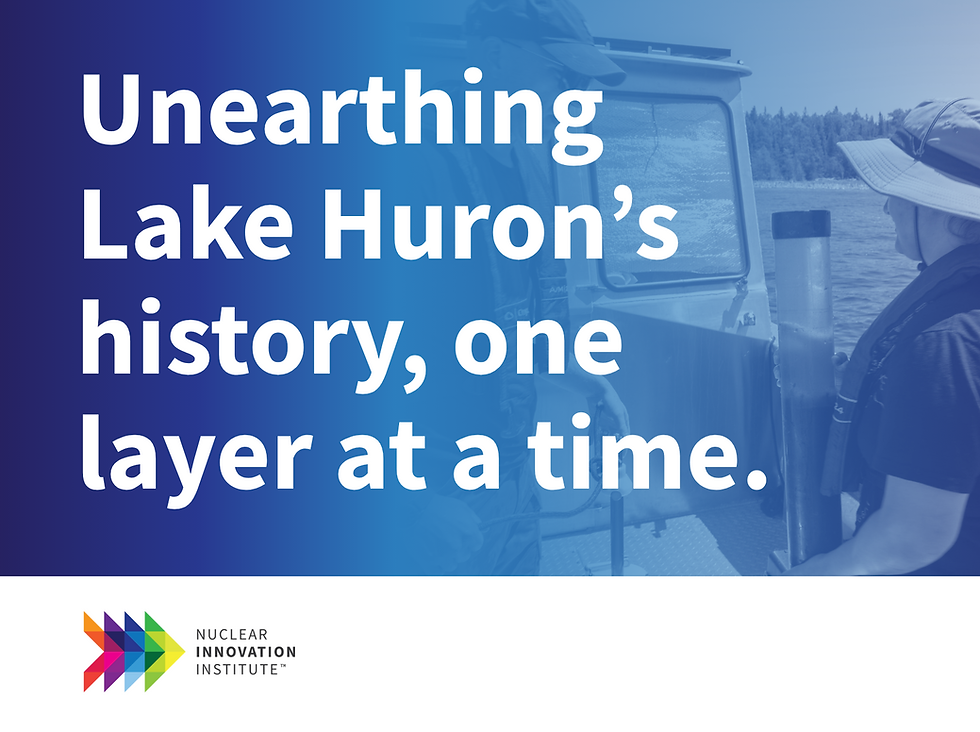Reflections of an energy boomerang
- David Campbell

- Feb 8, 2021
- 3 min read
Updated: Jan 10, 2022
From David Campbell, Director of the Bruce Power Centre for Next Generation Nuclear

Joining the Centre for Next Generation Nuclear has been something of a return for me. I spent the last two years working outside of the energy industry at a big consulting firm. Upon joining the Centre, I became a “boomerang”—an energy sector returnee.

Over recent weeks, I’ve found myself reflecting on some of the best features and some of the greatest challenges facing the energy industry. Here are three of the big ones:
Few sectors are as exciting as energy.
As a policy person, I love that energy crosses diverse disciplines—market design, infrastructure, engineering, long-term planning. And, of course, it is crucial to the central challenge of our time: climate change.
As friends of the NII at General Fusion recently put it, by the year 2050 society needs to decrease net emissions by 100% worldwide, while at the same time increasing our energy output by 200%.
That is the challenge we must overcome it if we are to maintain (much less improve) our standards of living. This is daunting… but also, what could be more exciting?
There is a huge barrier to entry to understanding energy—but there doesn’t have to be.
Energy is highly technical, and highly regulated. The result is a dictionary's-worth of lingo to learn before you can hope to participate in a typical industry conversation around electricity markets, or nuclear power, or pipelines.
This barrier to entry often makes people distrustful of the sector, which reinforces insularity in the industry—which, in turn, creates a negative feedback loop of distrust.
It doesn’t have to be this way. When you peel away the regulatory superstructures and the scientific details, energy is often a relatively simple conversation about problem-solving for the balance between what we can achieve, and what we can afford. In other words, it’s about values.
“Stripping away the complexity and inviting people into this conversation will only make the industry stronger.”
Our industry has a diversity problem.
As a white man—who hopes to someday be an older white man—I say this next part cautiously as I don’t want it taken the wrong way.
But there are simply too many of us in this industry, and especially at senior levels. The demographics of a typical energy conference have been a running joke among former colleagues of mine, and rightly so.
While other industries in North America have found a way to welcome more diversity into their ranks, energy has remained stubbornly stuck in the past. Lest there be any doubt, this is, in fact, a problem. Study after study has shown that diversity makes teams stronger—it leads to more and richer ideas, and a greater understanding of the impact of decisions. It also opens up a wider talent pool, and therefore a stronger one.
Fortunately, there are some promising signs of change in the industry. On Thursday, my colleague Susie Ho will be sharing the unsung stories of just a few of science’s leading women as part of the International Day of Women and Girls in Science.

Susie is herself a woman in STEM, a leader in the industry, and founder of the Women in Leadership chapter in Ottawa. Along with the efforts of organizations like Women in Nuclear, this sort of work is slowly moving the needle.
But there’s a lot remaining to be done to increase diversity and inclusion in energy. We need a lot more Susies if the industry is going to be successful in tackling the challenges we face.
Looking ahead
While I have you here, let me just tell you that we’re going to be posting more regularly on this blog over the coming months.
“Here at the Bruce Power Centre for Next Generation Nuclear, we are curious about the technologies that can help power a net-zero future in Ontario, in Canada, and globally.”
We’re going to use this blog to share our “ideas in progress.” We’ll post about ongoing research, interesting articles we find, and developments in the sector, as well as sharing our own work and milestones.
Written by David Campbell, former Director at the Nuclear Innovation Institute.




